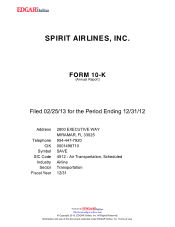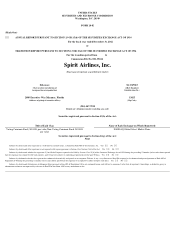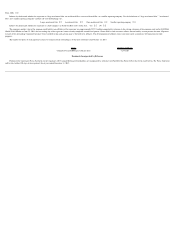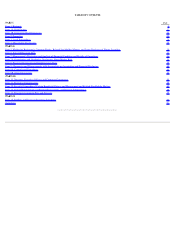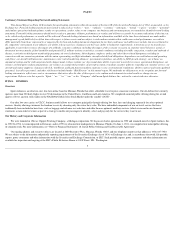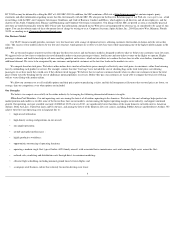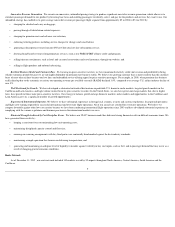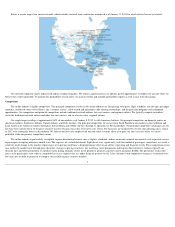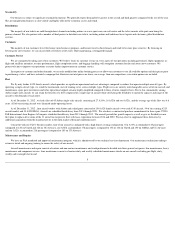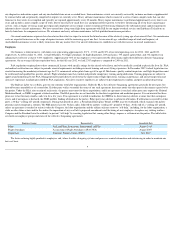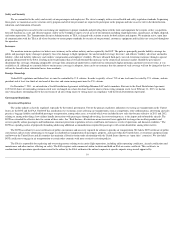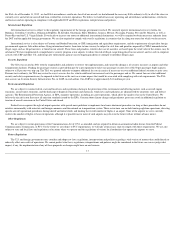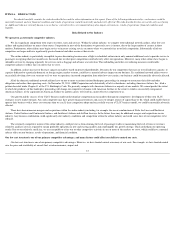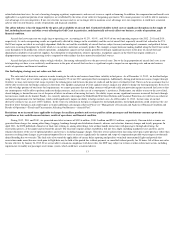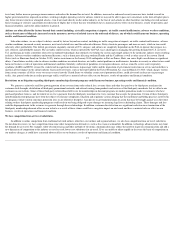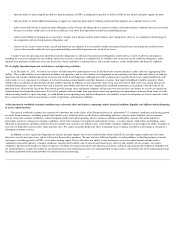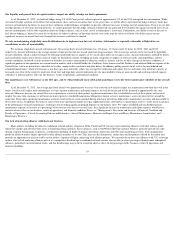Spirit Airlines 2012 Annual Report Download - page 9
Download and view the complete annual report
Please find page 9 of the 2012 Spirit Airlines annual report below. You can navigate through the pages in the report by either clicking on the pages listed below, or by using the keyword search tool below to find specific information within the annual report.
Seasonality
Our business is subject to significant seasonal fluctuations. We generally expect demand to be greater in the second and third quarters compared to the rest of the year.
The air transportation business is also volatile and highly affected by economic cycles and trends.
Distribution
The majority of our tickets are sold through direct channels including online via www.spirit.com, our call center and the ticket counter with spirit.com being the
primary channel. We also partner with a number of third parties to distribute our tickets, including online and traditional travel agents and electronic global distribution
systems.
Customers
The majority of our customers travel for leisure (non-business) purposes, and leisure travel is discretionary and tends to be more price sensitive. By focusing on
lowering our cost structure, we can successfully sell tickets at low fares while maintaining a strong profit margin.
Customer Service
We are committed to taking care of our customers. We believe focus on customer service in every aspect of our operations including personnel, flight equipment, in-
flight and ancillary amenities, on-time performance, flight completion ratios, and baggage handling will strengthen customer loyalty and attract new customers. We
proactively aim to improve our operations to ensure further improvement in customer service.
In response to customer and other demands, we recently modified our online booking process to allow our customers to see all available options and their prices prior
to purchasing a ticket, and have initiated a campaign that illustrates our total prices are lower, on average, than our competitors, even when options are included.
Fleet
We fly only Airbus A320 family aircraft, which provides us significant operational and cost advantages compared to airlines that operate multiple aircraft types. By
operating a single aircraft type, we avoid the incremental costs of training crews across multiple types. Flight crews are entirely interchangeable across all of our aircraft, and
maintenance, spare parts inventories and other operational support remains highly simplified compared to those of more complex fleets. Due to this commonality among
Airbus single-aisle aircraft, we can retain the benefits of a fleet comprised of a single type of aircraft while still having the flexibility to match the capacity and range of the
aircraft to the demands of each route.
As of December 31, 2012 , we had a fleet of 45 Airbus single-aisle aircraft, consisting of 27 A319s, 16 A320s and two A321s, and the average age of the fleet was 4.6
years. All of our existing aircraft were financed under operating leases.
As of December 31, 2012 , firm aircraft orders with Airbus and a third party consisted of 106 A320 family aircraft ( two used A319 aircraft, 54 of the existing A320
aircraft model, and 50 A320 NEOs). Aircraft are scheduled for delivery from 2013 through 2021 . We also have a contractual purchase commitment for three spare V2500
IAE International Aero Engines AG engines scheduled for delivery from 2013 through 2015 . The aircraft provide for growth capacity as well as give us flexibility in our
fleet plan to replace all or some of the 31 aircraft in our present fleet with lease expirations between 2016 and 2020. We may elect to supplement these deliveries by
additional acquisitions from the manufacturer or in the open market if demand conditions merit.
Consistent with our ULCC business model, each of our aircraft is configured with a high density seating configuration. Our A319s accommodate 145 passengers
(compared to 120 on United and 124 on US Airways), our A320s accommodate 178 passengers (compared to 138 or 144 on United and 150 on JetBlue and US Airways)
and our A321s accommodate 218 passengers (compared to 183 on US Airways).
Maintenance and Repairs
We have an FAA mandated and approved maintenance program, which is administered by our technical services department. Our maintenance technicians undergo
extensive initial and ongoing training to ensure the safety of our aircraft.
Aircraft maintenance and repair consists of routine and non-routine maintenance and work performed is divided into three general categories: line maintenance, heavy
maintenance and component service. Line maintenance consists of routine daily and weekly scheduled maintenance checks on our aircraft, including pre-flight, daily,
weekly and overnight checks and
8

